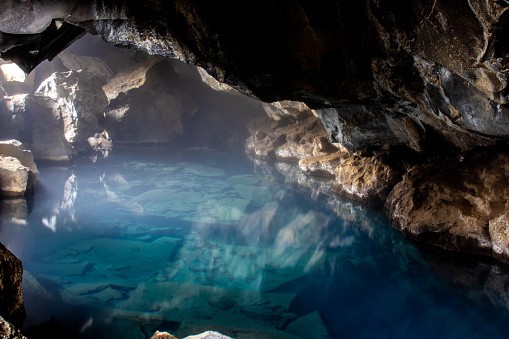
In southwest Africa, a country known as Namibia is known for its soft desert sand and harsh waterless landscapes. However, it also holds one of the treasures of nature called the Dragon's Breath Cave.
What Is the Dragon's Breath Cave?
Namibia is a coastal country often referred to as the skeleton coast. It is also sometimes called "the land that God made in anger" due to its spectacular yet harsh arid landscapes. As a matter of fact, the name Namibia comes from the local Nama word "Namib," which means a vast and empty space.
Beneath Namibia's Kalahari Desert lies the Dragon's Breath Cave which is located about 28.6 miles (46 kilometers) north of Grootfontein. It has a strange and intense geology which cannot be found in other parts of the world.
The first documented exploration of Dragon's Breath Cave took place in 1986 by Roger Ellis. The following year, Ellis and Charles Maxwell led an expedition of divers and cavers from the South African Speleological Association to further explore the cave. This event was documented in the book "The Darkness Beckons" by Martyn Farr.
The expedition led to the discovery of a lake at the bottom of the cave. It measures 4.9 acres (2 hectares), making it the largest non-subglacial underground lake in the world. However, it was only after 33 years that the actual depth of the Dragon's Breath Cave was revealed.
The South African Speleological expedition was only able to send explorers to a depth of 429.8 feet (131 meters). Because of this, the floor of the cave remained elusive.
In 2019, Stone Aerospace developed an autonomous AI-powered underwater drone called Sunfish to map the full extent of the lake. It was found that the bottom of the lake extended a further 433.1 feet (132 meters) below the limit of human exploration.
Mysteries of the World's Largest Subterranean Lake
The name of the cave is thought to have come from the warm gust of humid air rushing to the faces of the visitors at its entrance. This air rises out of the opening in the ground from within the belly of the Earth.
Past the narrow entrance, light is almost absent from most parts of the cavern. The waters are perfectly clear since there is little wave action to kick up sediment. Its water temperature is also kept stable due to its underground location.
No light penetrates the surface of the lake because of its depth and narrow tunnels. Photosynthesis is almost limited by this zero-sunlight condition, so it is only capable of
harboring life in the form of worm-like creatures and tiny shrimp. Another unique water creature found in this isolated lake is the golden cave catfish (Clarias cavernicola), which has small eyes and poor eyesight, which makes it easier to adapt to extreme darkness.
There is only limited access to the cave, and explorers need to climb ropes, narrow tunnels, and ledges before having a sudden drop to the surface of the lake. Due to the difficulty in reaching the depths of the cave, much of its secrets are still hidden from the modern world.
RELATED ARTICLE : Mexico Lake's 3-Billion-Year-Old Underwater Lifeforms in Danger? What's Really Happening to These Cauliflower Algae?
Check out more news and information on Caves in Science Times.
© 2025 ScienceTimes.com All rights reserved. Do not reproduce without permission. The window to the world of Science Times.










